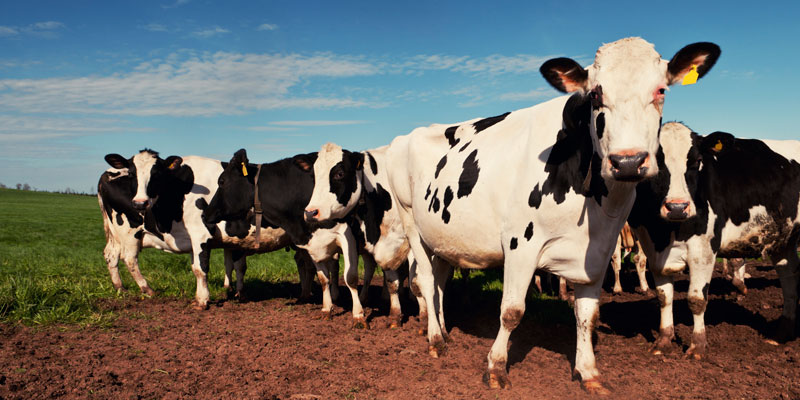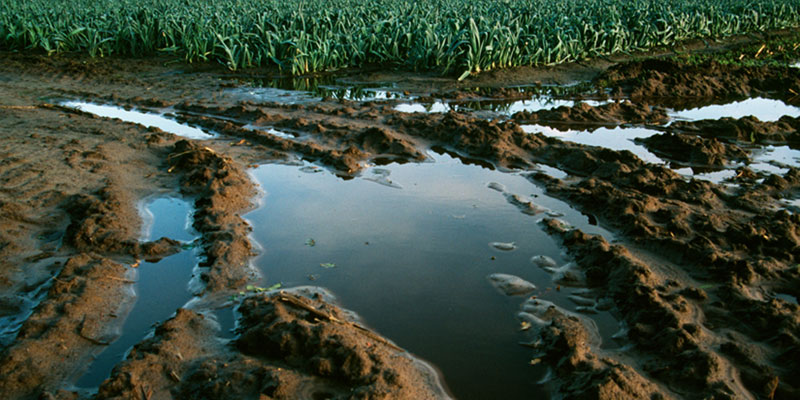An investigation of bacterial persistence and transport within the subsurface environment in the Thomas Brook watershed
Principal Investigator - Rob Jamieson, Associate Professor, Dalhousie University, 2007 - 2010

Challenge
Groundwater contamination has the potential to cause significant human health risks. Studies suggest that long-term agricultural activity, with manure and fertilizer applications, may alter the soil to the extent that some microbial contaminants are able to survive, or possibly grow, before being transported to water systems. This issue may result in a long-term source of groundwater contamination, which could have significant human health implications. The presence of Escherichia coli (E. coli)in water is commonly used as an indicator of recent fecal contamination. However, a few recent studies suggest some E. coli populations are able to survive for extended time periods in agricultural soils. Certain strains of this bacteria group may become “naturalized” and develop the ability to persist and replicate in soil and aquatic environments. This finding needs to be verified, as this behavior means that E. coli is not an appropriate indicator of recent fecal contamination. Other knowledge gaps include how the diversity of soils, climate, and hydrological conditions affect the transport of these contaminants.
Dr. Rob Jamieson has conducted a field-scale study which directly links microbial contamination of groundwater to specific agricultural activities as a means to address the above knowledge gaps.
Project
For this project, an active agricultural field located within the Thomas Brook watershed within the Annapolis Valley, Nova Scotia was treated and tested. For at least the past decade this field has been in a corn-corn-barley rotation with amendments of semi-solid dairy manure and inorganic fertilizer.
To assess the persistence of E. coli within a manured agricultural soil, samples were collected from the field and the adjacent riparian zone as a control (a riparian zone is the interface between land and a river or stream). In a controlled laboratory study soil samples were inoculated with a strain of E. coli resistant to naladixic acid (E. coli NAR), a common biotracer within surface water environments. This experiment demonstrated that the fertilized field soil provided more suitable conditions for bacterial survival and persistence.
The presence of E. coli within the existing tile drainage (tile drainage is an agricultural practice that removes excess water from soil subsurface) and shallow groundwater system beneath the study field was also assessed, Four groundwater monitoring wells were installed in the winter of 2007. Groundwater and tile drainage samples were collected every 1–2 weeks, with additional samples collected after manure application or heavy rainfall. Compared to the groundwater wells, tile drain runoff contained more frequent detections and higher E. coli numbers, and was detected at all times of the year. However, E. coli detections were actually higher before manure was applied than after. This suggests the presence and abundance of E. coli was unrelated to the timing of manure application. Therefore, E. coli isan inappropriate organism for indicating recent fecal contamination in these types of agro-ecosystems.
Outputs
- Establishment of a field site and sampling methodologies to investigate persistence and transport of pathogens
- Production of a dataset that suggests new indicator organisms need to be utilized to assess the presence of recent fecal bacteria.
- Presentation of data to the Thomas Brook Watershed Evaluation of Beneficial Management Practices (WEBS) Project annual meeting. During this one-day meeting researchers conducting researchers with the Thomas Brook Watershed presented and discussed research results.
- The research has been shared with partners and end-users via multiple local and international conferences
Publications
Vanderzaag, A., Campbell, K., Jamieson, R., Sinclair, A., and Hynes, L. 2010. Survival of E. coli in agricultural soil and presence in tile drainage and shallow groundwater. Canadian Journal of Soil Science. 90:495-505.
Outcomes
- Increased knowledge as a result of the discovery that E. coli may not be an appropriate indicator of recent microbial contamination within agricultural systems.
- Increased awareness of the need for further investigation. The results of this research lead to the development of a successful NSERC Strategic Grant which examined pathogen persistence and transport, and the identification of new indicator organisms for monitoring microbial water quality in agricultural watersheds.
- The results of this research provided Agriculture and Agri-food Canada with additional information needed to assess the performance of beneficial management practices within the Thomas Brook watershed (WEBS project).




